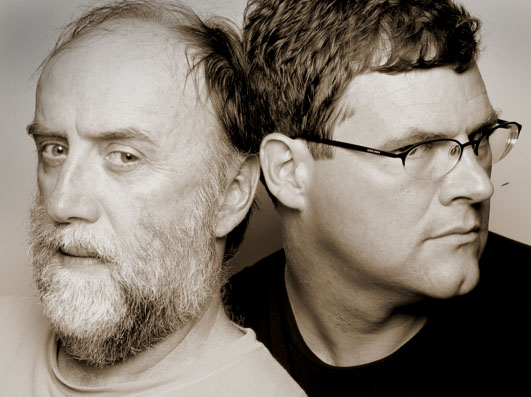Guggenheim Fellowship

On April 6, Kirk Johnson and Ray Troll were awarded a joint Fellowship in the Science Writing category from the John Simon Guggenheim Memorial Foundation to support their book project entitled, Cruisin’ the Eternal Coastline: the Best of the Fossil West from Baja to Barrow. In 2011, Guggenheim fellowships were awarded to 180 scientists, artists, and scholars (there were only two awards in the Science Writing category). The Fellowship will provide Troll and Johnson with $50,000 that will support the completion of their project.Here is a description of their project:
We propose to write and illustrate a book entitled, Cruisin’ the Eternal Coastline: The Best of the Fossil West from Baja to Barrow. This 75,000 word, full-color book will be 204 pages long and will feature 20 paintings, hand-drawn maps for each state, more than 100 small drawings, and over 100 photographs. This book will cover the West Coast, reaching from Baja, California to Barrow, Alaska with a focus on the population-rich areas of California, Oregon, Washington, British Columbia, and Alaska. Our goal is to create a widely distributed book that is accessible to a broad range of audiences and that opens their eyes to the vast span of geologictime and evolutionary history that surrounds them.
This is a collaborative effort that combines the science writing of Kirk Johnson and the art of Ray Troll to create a popular book about the geology and paleontology of the West Coast of North America. Johnson is a geologist, paleontologist, science writer, and the Vice President of the Denver Museum of Nature & Science. Troll is a fine artist and musician who is widely known in Alaska and the Pacific Northwest for his iconic public art, books, t-shirts, and imagery.
 Our previous collaborations have included the award-winning 2007 book, Cruisin’ the Fossil Freeway: An Epoch Tale of a Scientist and an Artist on the Ultimate 5,000-mile Paleo Road Trip and its associated hand-drawn Rocky Mountain wall map, as well as museum exhibits, music, and magazine articles. Our collaborative style is colorful, fun, and engaging. We seek to make art and science work together to help our readers grasp the magnitude and significance of the biggest story of all: the evolution of life on our planet.
Our previous collaborations have included the award-winning 2007 book, Cruisin’ the Fossil Freeway: An Epoch Tale of a Scientist and an Artist on the Ultimate 5,000-mile Paleo Road Trip and its associated hand-drawn Rocky Mountain wall map, as well as museum exhibits, music, and magazine articles. Our collaborative style is colorful, fun, and engaging. We seek to make art and science work together to help our readers grasp the magnitude and significance of the biggest story of all: the evolution of life on our planet.

